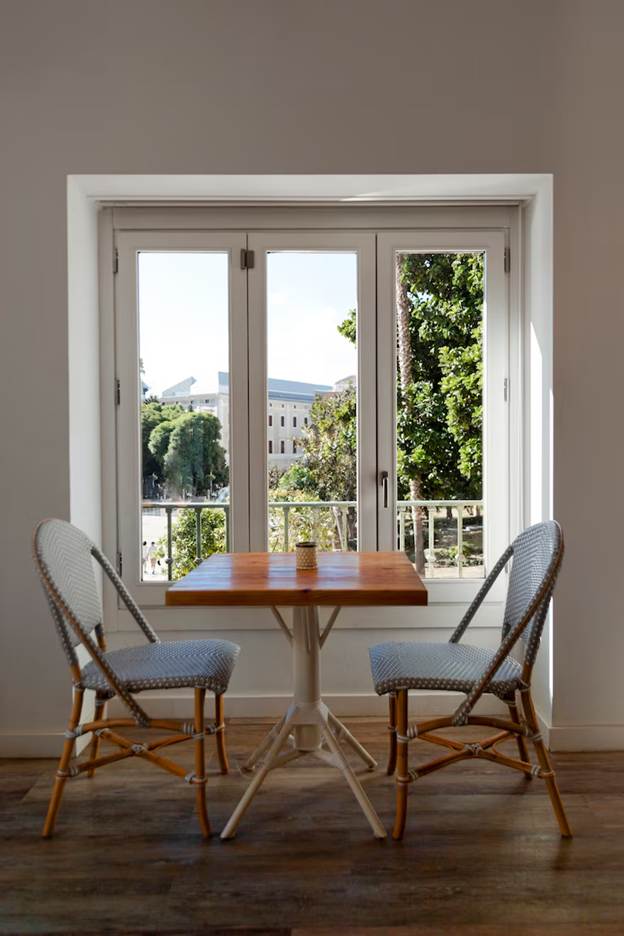Maximize Natural Light Without Sacrificing Energy Efficiency
It’s scary, isn’t it? You want a bright, sun-drenched home, but then you start thinking about those energy bills – yikes. Walls of windows sound amazing, but you’ve probably heard the horror stories: rooms like freezers in the winter, ovens in the summer. A lot of people think more windows automatically mean more money flying out the window (pun intended!), and you’re left wondering, “Can I really have it all?” Well, good news: you totally can.
With some smart thinking, a little know-how, and choosing the right windows, you can soak up the sunshine and still keep your energy bills in check – maybe even lower them. If you are looking to improve your home’s energy efficiency with quality products, consider consulting with a reputable Window Replacement Company in your area. Investing in new windows may be what you need to bring the sunshine indoors without bankrupting yourself. Let’s jump in and see how to bring the sunshine indoors without bankrupting yourself.
Light and Energy Efficiency: What’s the Connection?
Natural light – that gorgeous sunshine pouring through your windows – is more than just pretty. It’s actually good for you. It lifts your mood, helps you sleep better, and can even make it easier to concentrate. Plus, you’ll use your lamps less, which means less money spent on electricity. But making that happen without turning your house into an icebox or a greenhouse? That’s the trick.
See, windows are the main way we get that sweet, sweet sunlight. But they also play a big part in how warm or cool your house stays. Solar gain – that’s just a fancy way of saying the sun’s heat coming through your windows. In the winter, that’s awesome. Free heat! But in the summer? Not so much. Think of your house like a big balloon. The “energy envelope” is what keeps the inside air in and the outside air out. Windows? They’re often the weakest spot. Heat can sneak in and out way easier through them than through insulated walls. So, if you want lots of natural light and a comfy, energy-efficient home, one must understand these dynamics, and it is possible.
Smart Design: Your Secret Weapon
Where your house sits and how it’s laid out can make a HUGE difference.
Which Way Do You Face?
If you’re in the Northern Hemisphere, south-facing windows are your best friend, generally. They grab the most sun in the winter when the sun’s low. And they’re easier to shade when summer rolls around. East-facing windows? Nice morning light, sure, but they can get hot in the afternoon. West-facing windows? Usually, the least energy-efficient, since they get blasted by the hot afternoon sun. And think about how your rooms are arranged. Open floor plans let light travel further, so you don’t need to turn on lights in the middle of the house.
Light Shelves and Those High-Up Windows
Ever heard of a light shelf? It’s like a little ledge above your window that bounces sunlight up onto the ceiling and deeper into the room. Then there are clerestory windows – those little windows way up high. They bring in light without losing privacy or adding too much heat. Clever, right? It’s a passive system.
Skylights and Tubes
Skylights can really flood a room with light. But be careful – they can also crank up the heat in summer and leak heat in winter. The trick is picking energy-efficient models and putting them in the right spot – maybe not on the south side. Solar tubes? Those are like reflective tunnels that bring sunlight from your roof down inside. They’re smaller than skylights, so they tend to lose less energy.
● Window Size Matters: Don’t go overboard. Think about the view, but also think about energy use.
● Shade It Right: Overhangs or even just planting trees can block the sun when you need it.
● See the Light (Before You Build): There’s software that can show you how light will move through your house at different times of the day. Pretty cool!
Good design isn’t just about looks. It’s about making a place that’s both pretty and saves you money.
Window Tech: It’s Come a Long Way
Windows aren’t just panes of glass anymore. There’s some serious tech involved that helps with energy efficiency without blocking out the light.
Low-E Coatings
These are a game-changer. Low-E (it stands for Low Emissivity) coatings cut down on the amount of infrared and UV light that gets through. So, you get the bright, sunny rooms without the fading furniture or the skin damage. Oh, and they help keep the heat where it belongs – inside in the winter, outside in the summer.
Double or Triple the Pane, Double or Triple the Fun (and Insulation)
Instead of just one layer of glass, double- or triple-pane windows have two or three. That creates pockets of air (or sometimes gas), which act like a cozy blanket, stopping heat from moving in or out.
Gas Between the Panes
Speaking of gas, that space between the panes in those fancy windows is often filled with argon or krypton. These gases are heavier than air, so they make it even harder for heat to escape.
Smart Glass: The Future is Now
If you’re feeling fancy, check out smart glass. It can actually change its tint depending on how much sunlight is hitting it. So, you’re always in control of how much heat and glare you get.
Window-to-Wall Ratio, or, Don’t Get Carried Away
Before you get too excited and cover your house in glass, think about the window-to-wall ratio (WWR). That’s just how much of your wall is window. More windows mean more light, but also potentially bigger energy bills. There’s software to help you figure this out, too.
| Glazing Option | The Good Stuff | The Not-So-Good Stuff |
| Single Pane | Cheap as chips | Leaky, cold, condensation city! |
| Double Pane | Warmer than single pane, quieter too | More expensive than single |
| Triple Pane | Super warm, super quiet | The most expensive, unfortunately |
| Low-E Coating | Blocks heat and UV, saves energy | Cuts a tiny bit of light |
| Argon/Krypton Fill | Stops heat loss | Can leak over time, needs special windows |
Interior Design: Let There Be (More) Light!
Even without redoing your windows, you can do things inside to make your home brighter and more energy-efficient.
Color Me Light
Light colors are your friends. Paint your walls, ceilings, and even your floors in light shades like white, cream, or pale gray. They bounce light around and make the room feel bigger.
Mirrors, Mirrors, Everywhere
Mirrors are magical. Put them in the right spots, and they can double the amount of light in a room. Shiny stuff like polished wood floors or glossy furniture helps, too.
Window Treatments: Choose Wisely
Think carefully about what you put on your windows. Sheer curtains or blinds soften the light without blocking it completely. Cellular shades are great for insulation and letting you control how much light comes in. You can even get curtains with a sheer layer and a blackout layer – best of both worlds!
Furniture Placement
Don’t block your windows with big sofas or bookshelves! And try to choose furniture that’s light and airy, so the light can move around.
I remember when I helped my friend Sarah redecorate her living room. It had dark walls and heavy furniture. We painted the walls a light gray, added a big mirror, and swapped the thick drapes for sheer curtains. The difference was amazing. Brighter, more open, and way more inviting – and we didn’t even touch the windows!
Outside the Box: Exterior Tricks
What’s happening outside your house also matters.
Awnings: Your Summer Shield
Awnings (either ones that stay put or ones you can roll up) are lifesavers in the summer. They block direct sunlight from hitting your windows, which keeps things cooler.
Overhangs and Shade Trees
Overhangs, pergolas, and trees can all provide shade at different times of the year. They block the high summer sun but let the low winter sun shine in.
Exterior Shutters/Blinds
You see these a lot in Europe. They’re great for controlling light and heat. You can adjust them throughout the day as the sun moves.
Landscaping
Trees aren’t just pretty – they’re practical. Deciduous trees (the ones that lose their leaves in the fall) give you shade in the summer but let the sun through in the winter.
Think about a south-facing window. In the summer, an awning blocks the sun and keeps the room cool. In the winter, the awning lets the sun shine in and warm the room. Simple but effective.
High-Tech Help: Automation
Smart home tech can make lighting even more efficient.
Daylight Sensors
These automatically dim your lights when there’s enough natural light. So, you save energy without even thinking about it.
Smart Blinds
Smart blinds can adjust themselves based on the sunlight, minimizing heat or maximizing light as needed.
Zoned Lighting
You can control the lights in different areas of your house separately, so you only use artificial light where you need it.
Home Energy Management Systems
These tie everything together, linking your lights to your heating and cooling systems for maximum efficiency.
Yeah, setting this stuff up can cost a bit upfront. But the savings on your energy bills can be huge in the long run.
Finding the Sweet Spot: Beauty, Comfort, and Green Living
Bottom line? Getting the most out of natural light without wasting energy is all about finding the right balance. It’s about mixing what you like with what’s good for the planet (and your wallet!). By focusing on energy-efficient windows, smart design, and thoughtful touches inside and out, you can enjoy a brighter, healthier home.
So, where do you start? Take a look at your current lighting and windows. What could you improve? Even small changes can make a big difference. Think lower bills, a more beautiful home, and a smaller footprint on the earth. Sounds pretty good, right?





